OXFORD & the COTSWOLDS
Studded with gorgeous little villages with stone houses and churches, thatched roofs and ivy and rose-covered homes set amidst rolling green hills, this is a marvellous country to drive. Add the legendary university city of Oxford and with its proximity to London, it is a magnet for tourism.
Cycling: 1. Thames Valley Cycle Way. Between Oxford and Windsor and on to London. 2. Forest of Dean. Has many dirt-track options and some dedicated mountain bike trails.
Walking:
1. Cotswold Way. 103 miles between Bath and Chipping Campden.
2. Thames Path. The 184-mile path between its source near Cirencester to London.
3. Oxfordshire Way. 64-mile trail from Bourton-on-the-water to Henley-on-Thames.
4. Wychwood Way. 37-mile loop from Woodstock to Henley-on-Thames.
5. Ridgeway. The picturesque 87-mile trail along the chalky grassland of the Wiltshire Downs near Avebury down into the Thames Valley and then along the spine of the Chilterns to Ivinghoe Beacon near Aylesbury in Buckinghamshire.
READING
An abbey was built here in 1164 that was then closed in the Reformation in 1539 and then destroyed in 1547. Most of the stones were used to construct other buildings in the Reading area.
Reading Museum. Another municipal museum telling the local story. Some interesting exhibits were: Huntley Palmer biscuits, Roman mosaics from the Roman ruin at Silchester, and an 1885-6 complete copy of the Bayeux Tapestry (the real one is in Bayeux in Brittany, France that tells the story of William the Conqueror’s campaign in England in 1066. There are also Victorian paintings and a natural history section. Free
Museum of English Rural Life. At the University of Reading, this good museum had a lot of farming displays and many old wagons. Free
OXFORD (pop 160,000).
One of the world’s most famous university cities, it is steeped in history and full of great buildings. It is a great place to wander and peep into the quads of the various colleges. The city’s non-university majority far outnumbers the academic elite.
History. Strategically placed at the confluence of the Rivers Cherwell and Thames, it was a key Saxon town, heavily fortified by Alfred the Great during the war against the Danes, and continued to grow under the Normans who founded the castle in 1071. By the 11th century, the Augustinian abbey began training clerics and when Anglo-Norman clerical scholars were expelled from the Sorbonne in 1167, the abbey attracted students in the droves starting the first three colleges – University, Bolliot, and Merton in the mid-13th century. The enmity between the locals and students culminated in the St Scholastica’s Day Massacre in 1355 which resulted in 90 deaths. This resulted in the king ordering the university to be broken up into colleges.
During the 16th century Reformation, Protestants were burned at the stake under Mary I, and the subsequent hanging, drawing, and quartering of Catholics under her successor Elizabeth I. It flourished after the Civil War and the restoration of the monarchy when most notable buildings were constructed in the late 17th and 18th centuries.
The canal system, finished in 1790, linked Oxford to the Midland’s industrial centers and work and trade expanded beyond the academic core. This was augmented by the construction of the railways. The real industrial boom came in 1913 with the production of the Cowley Morris and Morris Minor cars and Mini’s still being produced at the BMW Cowley production line today.
University of Oxford. After Balliol, Merton, and University Colleges in the 13th century, three more were added in each of the subsequent three centuries and newer ones in the 19th and 20th centuries to accommodate an ever-expanding student population. It wasn’t until 1877 that lecturers were allowed to marry, females were admitted in 1878, and another 42 years before women were granted degrees. 26 British prime ministers have been educated at Oxford.
Today 38 colleges are catering to 23,000 students. Each one is individual in appearance and academic specialties. Many line Catte Street. Not all are open to the public, visiting hours change with the academic year and usually charge admission.
Trinity College (1555). See its 17th-century garden quad designed by Christopher Wren and baroque chapel.

Exeter College (1314). 17th-century hall and Gothic chapel with gold mosaic and stained glass.
New College (1379). The first to grant undergraduate degrees. The chapel has wonderful stained glass, cloisters, and evergreen oak.
All Souls College (1438). One of the wealthiest colleges, it has the hardest entrance exam in the world with the top finalists sitting a fellowship exam with an average of only two achieving the grade.
St Edmund Hall (1317). It is the sole survivor of the original medieval halls that preceded the colleges. It has a small 17th-century chapel and Mohawk Chief Oronhyatekha studied here.
Magdalen College (1458). With 40 acres of private lawns, woodlands, and river walks, it is one of the wealthiest and most beautiful of Oxford’s colleges. Has a medieval chapel with a 15th-century tower and cloisters with gargoyles.
Merton College. (1264). Old Library where Tolkien, an English professor here wrote The Lord of the Rings.
Christ Church (1524). The largest of the colleges with 650 students, it is the location of the Harry Potter films. Tom Tower has Great Tom, the 6-tonne bell that chimes 101 times each evening at 9:05 (Oxford is 5 minutes ahead of Greenwich and was the curfew for the original 100 students plus the one added in 1663). It also has the larges quadrangle, a 15th-century cloister, and Christchurch Cathedral.
University Church of St Mary the Virgin. With a tower dating from 1280, the wood of the nave looks its age. It held the trial of the three Anglican bishops during the reign of Mary I and all three burned at the stake. It has a memorial to both Protestant and Catholic victims of the Reformation. Climb the tower.
Radcliffe Camera. This is the most famous Oxford landmark and most photographed building. Built between 1737 and 1749, it is a circular, columned library and reading room filled with natural light and focused on the humanities. It has Britain’s third-largest dome and can only be visited on a guided tour.

Bodleian Library. One of the oldest and most impressive public libraries in the world, it too can be seen only on a guided tour.

Pitt Rivers Museum. This anthropological museum has a half-million objects housed in glass cages collected by Victorian explorers from around the world. Free
Ashmolean Museum. Britain’s oldest public museum from 1683, it has four floors of galleries that span the world: Egyptian mummies, Islamic art, porcelains, tapestries, silverware, musical instruments, extensive European art, and the Anglo-Saxon Felix jewel. Free
BLENHEIM PALACE
One of Britain’s greatest homes, it is a monumental Baroque fantasy built between 1705 and 1722. The land and funds to build the palace were granted to John Churchill, Duke of Marlborough, by a grateful Queen Anne, after his victory at eh 1704 Battle of Blenheim in southern Bavaria. Sir Winston Churchill was born here in 1874, it is Unesco listed and now home to the 12th Duke of Marlborough.
Enter the Great Hall with a 20m ceiling. See the Churchill Exhibition that gives great detail about Winston, a descendant of the Dukes, as was Princess Diana (of the Spencer family). Upstairs is a cheesy reenactment of some of the history of the palace and its famous inhabitants. Take a guided tour through the grand staterooms with the famous Blenheim tapestries commemorating many of the first duke’s triumphs and the magnificent Long Library.

I enjoyed the vast gardens and parklands with a long walk past a lake, arboretum, rose garden, cascade, and temple.
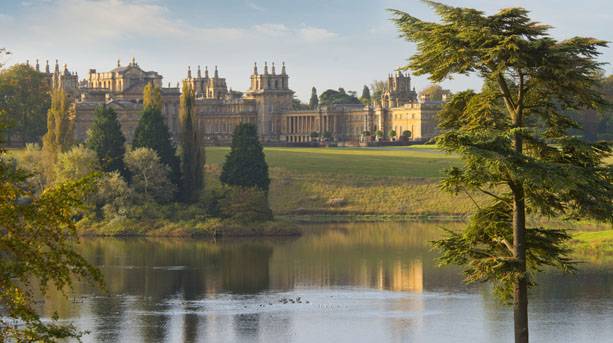
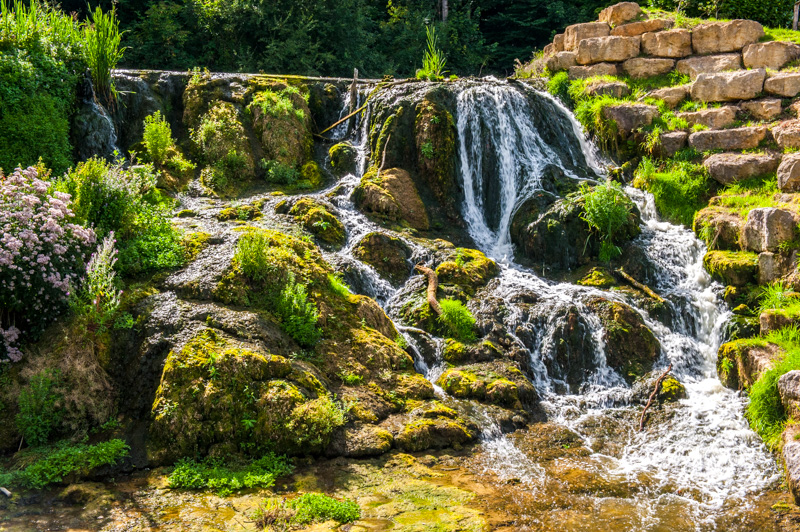
It is 8 miles north of Oxford next to the lovely town of Woodstock. Half price with English Heritage.
COTSWOLDS
These rolling hills are home to delightful golden stone villages, thatch-roofed cottages, evocative churches, and ancient mansions. The medieval wool trade brought wealth to the Cotswolds, leaving behind all these exquisite buildings. At 790 sq. miles, it is England’s second-largest protected area after the Lake District. Though it extends from north of Chipping Camden to south of Bath, the bulk of it lies in Gloucestershire. More than 87% is farmland and 130,000 people live within its boundaries.
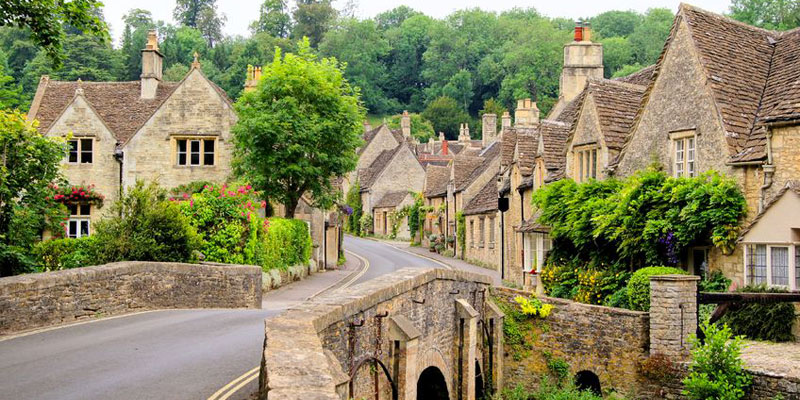
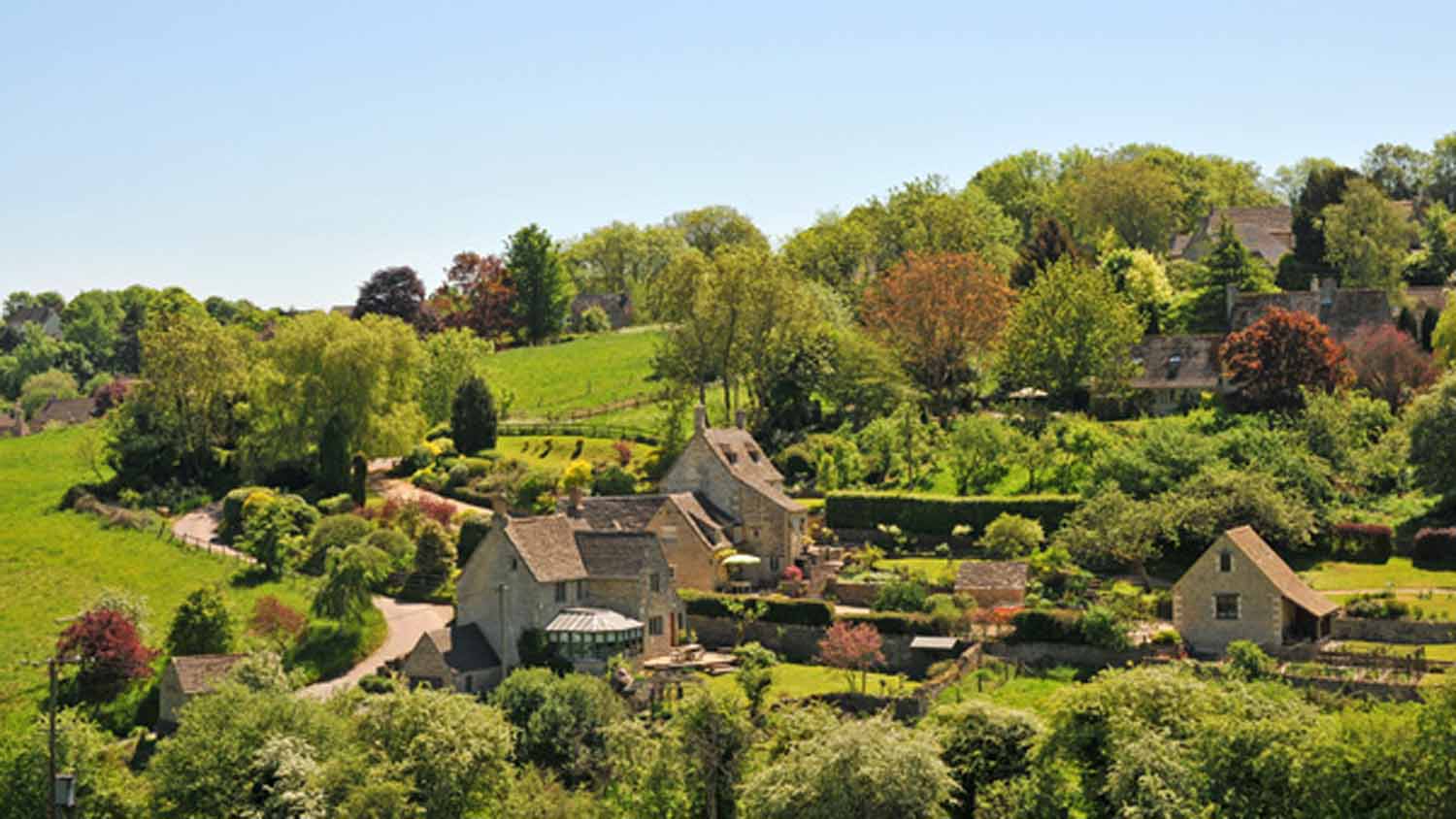
The gentle hills are perfect for walking and cycling. The views are always lovely with dry-stone walls, hedgerows, and stands of trees amidst the startling green fields.
From Oxford, we drove miles of back roads. Most were single lanes requiring either one of the approaching cars to pull off onto the many tiny spaces.
UFFINGTON WHITE HORSE. 20 miles southwest of Oxford is Britain’s most ancient chalk figure from 700 BC. On Oxfordshire’s highest point, it was created by cutting trenches out of the hill and filling them with blocks of chalk. Locals have maintained the figure for centuries, It is best seen from the air and is a half-mile walk from the car park.

Hereford Cathedral. A cathedral dedicated to the martyred King Ethelbert has stood here since Saxon times – a spectacular shrine to him is in the Lady Chapel. Norman pillars divide the 12th-century nave from the 14th-century side aisles. There are shrines to St Thomas of Hereford, a focus of pilgrimage since the 13th century.
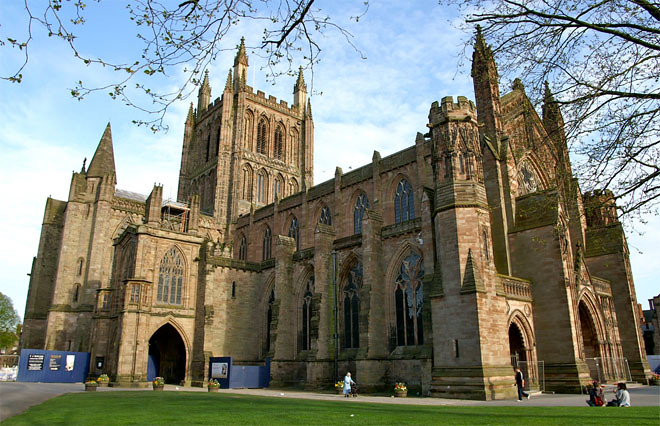
The Mappa Mundi is the largest surviving medieval world map.

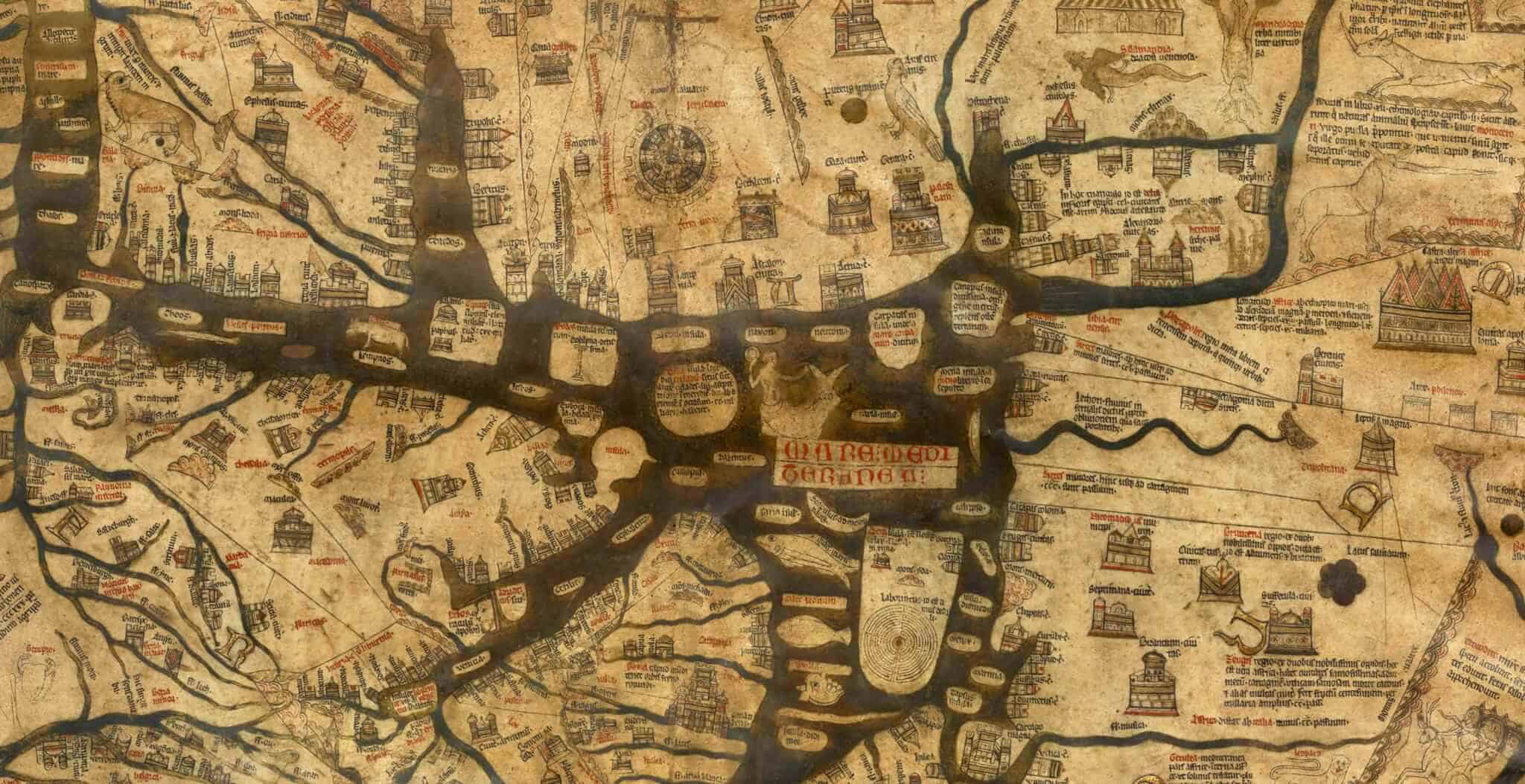
The principal altar is surmounted by a silver-gilt corona from 1992.
